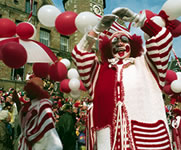
Historical Towns
- Historical towns in Brandenburg
- Cathedral Towns and Cities in Saxony-Anhalt
- The innovative Anhalt-Wittenberg Region
- Enchanting towns in the Harz
- The beautiful towns and cities in Saxony
- Towns and cities of culture in Thuringia
- Beautiful towns of Franconia
- East Bavarian traditional towns
- Alpine towns in the Allg�u
- The eastern Akpine Foothills and their towns
- Towns and villages in the western foothills of the Alps
- Mediterranean towns on Lake Constance
- Towns in the Swabian Alb
- Unspoilt towns in the Black Forest
- Towns for refined tastes in the Heilbronner Land
- Towns in the Odenwald
- Wine towns in Rheinhessen
- Saarland, a region of contrasts
- Romantic towns in the Hunsr�ck and Nahe Regions
- Idyllic towns and villages in the Moselle Region
- The Ahr Rhine Eifel holiday region
- Wine towns on the Romantic Rhine
- Modern towns and cities in the Bergisches Land Region
- The Lahn Valley and its fairytale towns
- Historical towns in Kurhessisches Bergland
- Sauerland's scenic towns
- Fairytale towns in the Weserbergland Hills
- Majestic towns in the M�nsterland Region
- The nine stars of Lower Saxony
- North and East Frisian Islands
- Vibrant Schleswig-Holstein
- Maritime towns along Mecklenburg's Baltic Coast
- Historical Hanseatic Towns
- Germany's Baltic Sea Islands
- The Mecklenburg Lakes
Contact and information
Baroque grandeur and glittering traditions craftsmanship in glass and crystal


Regensburg
When Alexander Ferdinand von Thurn und Taxis was appointed principal commissioner of the perpetual imperial diet in 1748, he moved his family residence from Frankfurt to Regensburg. Emmeram Palace, a former abbey, has been the ancestral home of the Thurn und Taxis royal family since 1812. Today it is one of the largest palaces in Europe that still functions as a private residence. The historical cloisters, the state rooms and the stables are all open to visitors.Bavarian Forest
Glassmaking is one of the most traditional crafts in the Bavarian Forest region. For well on 700 years local glassmakers have been turning raw materials into dazzling, transparent works of art. Glassblowers, stained glass painters and mosaic artists have all been drawn to the Bavarian Forest. The Glass Route between Waldsassen, Bodenmais, Frauenau and Passau connects the historical glassmaking centres, where today you can watch the artisans at work. Passau's crystal ship its interior decorated with Swarovski crystals embarked on its maiden voyage on the Danube in May 2007.Passau
Passau lies at the confluence of three rivers the Danube, the Inn and the Ilz. It is a cosmopolitan city and a buzzing port that teams traditional Bavarian gemütlichkeit with a near-mediterranean atmosphere. Passau's buildings testify to the skill and craftsmanship of Italian baroque architects. St. Stephen's Cathedral, for instance, has elaborate stucco work, magnificently ornate altarpieces, frescos and a gilded pulpit. It is also home to the biggest church organ in the world, with five separate instruments and 208 registers.
Landshut
In the 13th century Landshut, the capital of the Duchy of Bavaria, stood on the cusp of a dramatic rise in prosperity. For a long period it was Bavaria's economic powerhouse, political hub and cultural centre. Trausnitz Castle, which sits in splendour above the River Isar, was the residence of the Wittelsbach dynasty for hundreds of years. Landshut's boom in fortunes is reflected by the formidable, brick-Gothic Church of St. Martin and by an event known as the Landshut Wedding. To celebrate the marriage of George the Rich of Bavaria and Hedwig Jagiellon of Poland in 1475, tens of thousands of people are said to have feasted on 320 oxen, 1,500 sheep, 1,500 lambs, 500 calves and some 40,000 chickens. Since 1903, in honour of this phenomenal event, Landshut has staged a fair with a wedding procession and a spectacular pageant. The festivities now take place every four years.Bavaria's golf and thermal spa region
Five of East Bavaria's leading thermal spas have joined forces to become the largest thermal spa region in the world. Between them they offer myriad ways to relax, for example in an oriental ambience, a Roman setting or with traditional Chinese medicine. There's also an events calendar packed with Bavarian-style entertainment.Wolves at the door?
Wolfauslassen, a custom still celebrated every November in the villages of Freyung, Lalling and Rinchnach, derives from the tradition of hanging a bell around a cow's neck to scare away bears and wolves. In winter, with the cows safely in their stable, herdsmen would don the bells themselves, to fend off evil spirits. Nowadays villagers do the rounds from door to door, ringing their bells and only silencing them when a modest reward is given.The dumpling thrower
Deggendorf has a strong association with potato dumplings, a staple of East Bavarian cuisine. It even has a statue of the Deggendorf dumpling thrower, a townswoman who once bravely ended a siege by bombarding an enemy scout with dumplings. Interpreting the flying dumplings as a sign of plentiful food reserves, the besieging army capitulated. Today Deggendorf dumplings come in many forms such as chocolates or as cakes that go nicely with coffee.Travel Planner
Select an option...
Romance and charm
Climb the 60-metre tower in Straubing and gaze out from the tower keeper's quarters for fabulous views of the Upper Bavarian town, the Danube valley and the fertile plain known as the breadbasket of Bavaria.
Food and drink
The Bavarian weisswurst sausages are an institution. Discover them in Neumarkt in the Upper Palatinate, learn how to make your own and take home a weisswurst diploma. Nature and scenery
History and tradition
Bauscher and Seltmann are two companies producing porcelain of the finest quality in Weiden in the Upper Palatinate. Visitors can pick out exquisite gifts and their own favourites at the factory outlets.
Nature and scenery
The WellFit-Wald Bavarian Forest is a great destination for an active family holiday. Regional food, fresh air, plenty of exercise and lots of places to visit equal holiday adventure for all the family.








